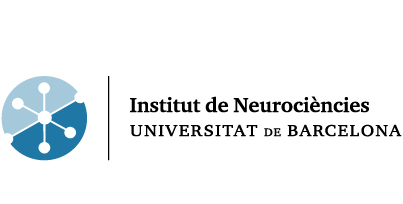
JORDI LLORENS
Position: Full Professor
Research team
Blanca Cutillas Arroyo
Associate Professor
bcutillas (at) ub.edu
Carla Soler Martín
Assistant Professor
carlasoler (at) ub.edu
Alberto Maroto Ferrer
Assistant Professor
amaroto7 (at) ub.edu
Erin Greguske
Early stage researcher
erin.greguske (at) ub.edu
Contact details
Prof. Jordi Llorens
Department of Physiological Sciences
Faculty of Medicine. Feixa Llarga s/n.
08907 L’Hospitalet de Llobregat (Spain)
+34934024277
jllorens (at) ub.edu
Research Interests
The vestibular system in the inner ear detects head accelerations, including gravity and those resulting from movements of the head. Vestibular dysfunction causes disequilibrium, vertigo, and loss of gaze control. The main research subject of our group is the identification of the cellular and molecular basis of the vestibular dysfunction that develops progressively during chronic exposure to vestibulotoxic chemicals. This is a way of identifying how reversible and irreversible events take place in this system, likely relevant to the major health concern of age-related sensory loss. It will also contribute to our understanding of the biology of this fundamental and neglected sensory system.
With a long record of activity in the field of experimental neurotoxicology, our laboratory has profited from its strong background in animal models of neurotoxicity to identify unique animal models of vestibular toxicity. Studying these original models, we have discovered new mechanisms of damage and repair of the vestibular synapses. These plasticity phenomena implicate many molecular players, including adhesion and extracellular matrix proteins, synaptic neurotransmission machinery components, and ion channels. The identification of players with dynamic roles in the damage and repair processes provides clues to identify mechanisms governing the reversibility or irreversibility of the damages, as well as therapeutic targets for preventing damage or promoting repair. Present options for treating vestibular disorders are practically inexistent.
Other research interests have been the main focus of the laboratory in previous years. These include 1) understanding the nervous and sensory toxicities of nitriles, 2) developing animal models to prove that nitriles may be the causative agents for konzo, lathyrism and tropical ataxic neuropathy, 3) identify the impact on the neuromuscular junction of proximal neurofilamentous axonopathies, as pathogenic mechanism relevant to our understanding of ALS (amyotrophic lateral sclerosis).
Current Research Lines
- Cellular and molecular basis of vestibular dysfunction in chronic ototoxicity.
- Development of animal models in vestibular toxicity
- Sensory and neuronal toxicity of nitriles
Technologies / methods
- Animal models of vestibular and auditory toxicity. Causing degeneration of auditory and vestibular hair cells for regeneration studies. Assessing vestibular dysfunction in animal models. Identification and characterization of chemicals with vestibular toxicity.
- Histology and gene expression studies of the sensory epithelia of the inner ear: scanning electron microscopy, light microscopy in semithin sections, transmission electron microscopy, immunohistochemistry and confocal microscopy, RT-PCR, RNA-seq.
- Assessment of neurotoxicity in rodents, including sensory, motor, and central nervous system effects. Functional (behavioral) analysis. Histological analysis.
Highlighted publications
·Greguske E.A., Carreres-Pons M., Cutillas B., Boadas-Vaello P., Llorens J. (2018) Calyx junction dismantlement and synaptic uncoupling precede hair cell extrusion in the vestibular sensory epithelium during sub-chronic 3,3’-iminodipropionitrile ototoxicity in the mouse. Arch Toxicol
·Llorens J., Callejo A., Greguske E.A., Maroto A.F., Cutillas B., Martins-Lopes V. (2018) Physiological assessment of vestibular function and toxicity in humans and animals. Neurotoxicology 66: 204-212 (2018)
·Callejo A., Durochat A., Bressieux S., Saleur A., Chabbert C., Domènech Juan I, Llorens J, Gaboyard-Niay S. (2017) Dose-dependent cochlear and vestibular toxicity of trans-tympanic cisplatin in the rat. Neurotoxicology 60: 1-9.
·Boadas-Vaello P., Sedó-Cabezón L., Verdú E., Llorens J. (2017) Strain and sex differences in the vestibular and systemic toxicity of 3,3’-iminodipropionitrile in mice. Toxicol Sci 156: 109-122.
·Sedó-Cabezón L., Jedynak P., Boadas-Vaello P., Llorens J. (2015) Transient alteration of the vestibular calyceal junction and synapse in response to chronic ototoxic insult in rats. Disease Models and Mechanisms 8: 1323-1337 (2015).



